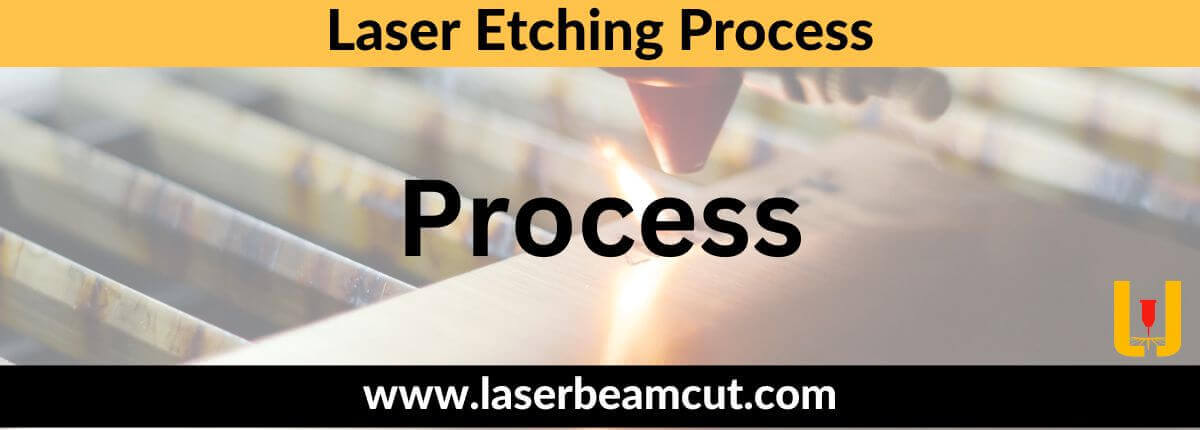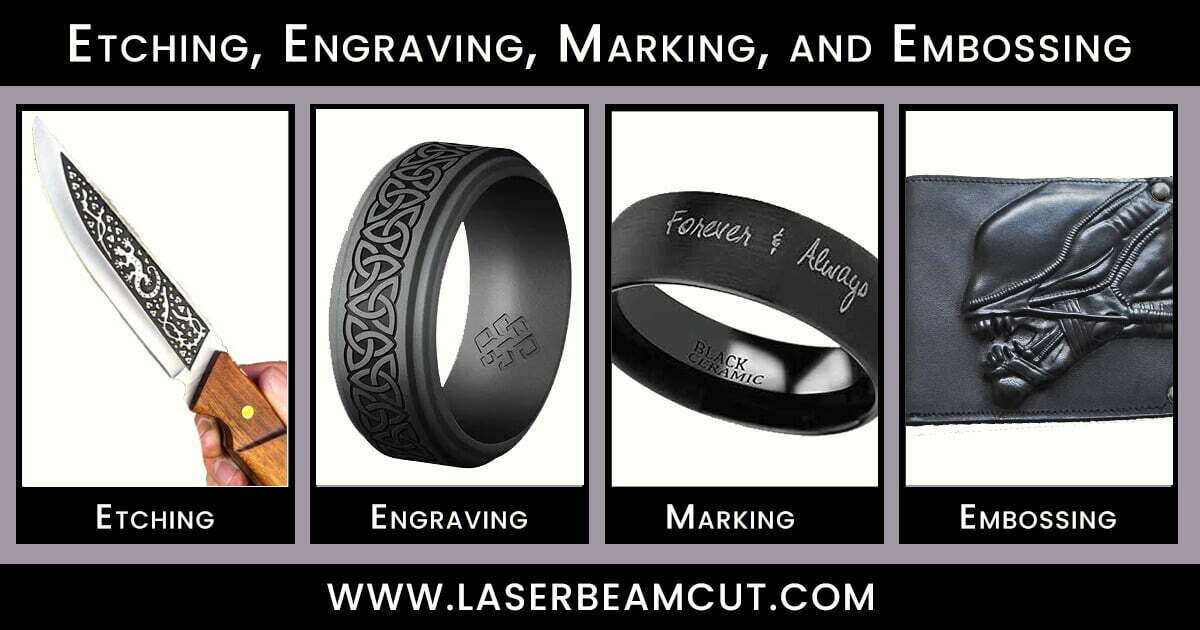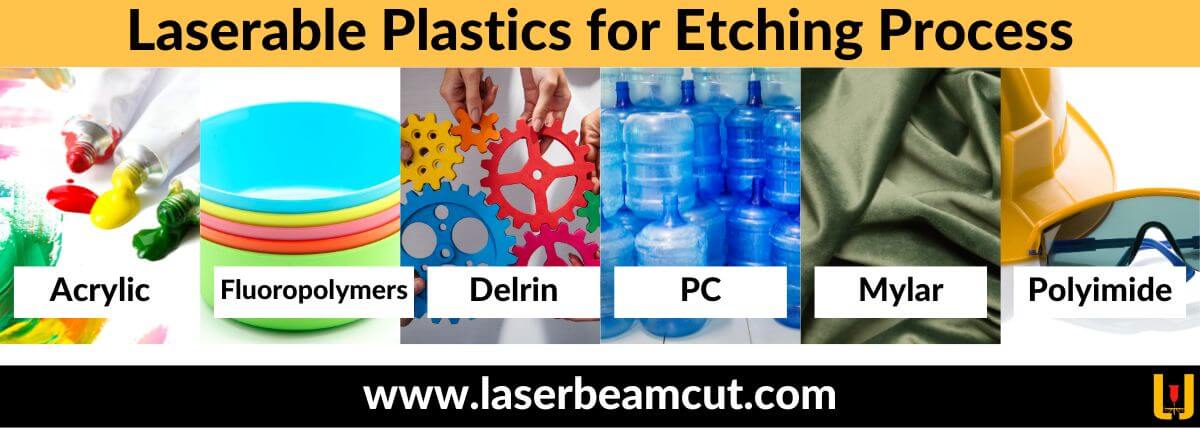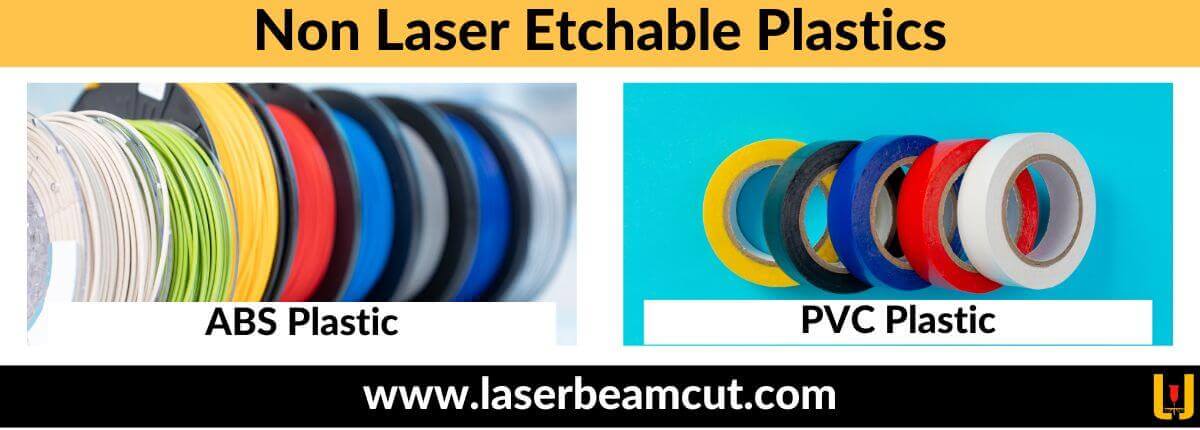Plastics are versatile and widely used materials in many industries, including packaging, construction, and consumer goods. Here need is to label these products for identification purposes. We have a lot of options to do this. Laser etching plastic is one method from various other methods.
Other methods related to lasers label relate to each other. Such as laser engraving, marking, and cutting can be done by laser etcher machine. You can say that all these processes can be performed by a single laser machine. But these processes are different in an operational way and their output.
Here we will discuss the laser etching process in detail. Plastic material has many types depending on their structure and chemical composition. Each type behaves differently when it comes under a laser beam. So, we should have a basic understanding of various types of plastics before going to their etching process.
Laser Etching Plastic
It is a process in which a laser heats the material to its melting point. When it melts according to the design, it leaves an etched mark on it.

In this process, material removal took place up to 0.0001 inches according to our needs. It is a similar process to plastic engrave and mark process. But there is a little difference between these three related terms.
- The etching method melts the material to etch the design on the material. Its maximum depth is up to 0.0001 inches.
- The engraving method vaporizes the material to engrave the design on the material. The maximum engraving depth is up to 0.005 inches.
- The marking method alters the surface properties to mark the design on it. In the marking process, no material removal took place.

Laserable Plastic Types for Etching Process
There are various types of plastics available in the market. Each type behaves differently under the laser process. Some plastics are laserable and some are not. Below are the laserable plastics.

Acrylic Plastics
Acrylic is a thermoplastic material. It uses in various industries. And this is an excellent choice for laser engraving due to its unique optical properties.
It offers several advantages, such as clean processing without toxic fumes. That can cause health irritation to the lungs.
When selecting the type of acrylic for laser etching, two common varieties are often referred to:
- Cast Acrylic
- Extruded Acrylic
Cast acrylic produces superior results due to its smooth and evenly distributed composition. On the other hand, extruded acrylic is a cheaper alternative that etches smoothly but may exhibit a slightly grayish shade in comparison.
These are also types of acrylic plastics but are not common for engraving tasks.
- Lucite
- Mirrored Acrylic
- Plexiglass
Fluoropolymers
Fluoropolymers are plastics that exhibit unique properties due to the carbon and fluoride bonding within their molecular structure. These materials are highly suitable for laser etching applications. The CO2 laser is considered the best option for etching fluoropolymers.
There are various further types of fluoropolymers.
- Teflon
- Kel-F
- Halar
Selecting the right wavelength laser and its power settings is crucial to achieving the desired etched results. These are thermally stable and chemically resistant.
As a result of their inherent properties, they can be etched to produce sharp, well-defined markings. That is precise and intricate. Moreover, fluoropolymers have a smooth and aesthetically pleasing surface finish after etching.
Delrin Plastics
Delrin is known as polyoxymethylene (POM) or polyacetals. It is a thermoplastic that belongs to the family of high-strength plastic materials. Due to rigidity and low friction properties, it is an ideal material for various applications.
When it comes to laser etching, Delrin proves to be a suitable choice due to its compatibility with both CO2 and fiber lasers. It can absorb laser energy efficiently at their specific wavelengths.
Due to their high strength properties, Delrin’s are used in bearings, pumps, and gears. It is possible to mark or etch these products using lasers.
It is crucial to consider the potential emission of fumes when working on Delrin with the lasers. These can release gases, including formaldehyde gas. That can be toxic and unpleasant. Therefore, it is crucial to have proper ventilation systems in place to ensure a safe working environment.
Polycarbonate
Polycarbonate is a thermoplastic material. It is widely recognized for its excellent properties. It is a possible choice for laser etching applications. With its high impact resistance and durability, it offers great potential for etching intricate designs. When it comes to laser etching, the type of laser used is crucial. And a CO2 laser with the appropriate wavelength is ideal for working with polycarbonate.
Types of polycarbonate are
- Lexan
- Lupoy
- Makrolon
These variants possess a high level of detail and exhibit good results when etched using a low-power laser. Additionally, their carbonate content ensures durable and long-lasting labels.
However, it is important to consider certain factors while laser etching polycarbonate. Yellowish discoloring may occur during the etching process. It may also produce smoke during the process. To minimize these effects, precautions should be taken. Adjusting laser parameters and using appropriate ventilation systems can help these challenges.
Mylar or polyester
Mylar is a type of polyester film. It is commonly used in laser processing applications, particularly in CO2 laser systems. Its unique properties make it an ideal material for laser cutting, marking, etching, and engraving. The CO2 laser, with its specific wavelength, is well-suited for working with Mylar.
The focused laser beam effortlessly slices through the material. It produces clean cuts and accurate edges. This process is especially useful for creating intricate designs and complex shapes on Mylar surfaces.
When Mylar is marked or etched using a CO2 laser, it undergoes a surface transformation. The laser beam interacts with the material, altering its appearance and leaving a permanent mark. The result is a high-quality and professional finish that enhances the visual appeal of Mylar products.
One of the key advantages of using Mylar in laser processing is its exceptional structural integrity. In laser etching, Mylar stencils are commonly employed for creating repetitive patterns or designs. These stencils, made from Mylar sheets, are precisely cut using a CO2 laser. The laser cutting speed can be adjusted to achieve the desired level of detail.
When working with Mylar, it is crucial to take into account the laser parameters and settings. Excessive laser power should be avoided to prevent edge burns. And avoid unintended melting of the material to save its internal strength.
Polyimide
Polyimides, such as Kapton, are a class of thermosetting polymers. These have various industrial applications due to their exceptional properties. One application where they excel is laser etching. It particularly when utilizing a CO2 laser. Laser processing with a CO2 laser offers precise and efficient cutting and marking capabilities. It makes it suitable for working with polyimide materials.
These have high chemical resistance properties. It ensures material integrity during laser etching. Polyimides are excellent electrical-resistant plastics.
Polyimides offer good mechanical properties for precise and intricate engraving. Laser etching on polyimides allows for the creation of precise solder masks and stencils.
Types Of Plastics Not Suitable For Laser Engraving
When it comes to laser etching, it is crucial to be aware of the types of plastics that are not suitable for this specific type of laser processing. Laser etching involves using a laser beam to etch designs or patterns onto a material.
However, not all plastics are compatible with this process. And using the wrong type of plastic can lead to various hazards and laser safety risks.

PVC
Polyvinyl chloride (PVC), is a widely utilized thermoplastic material. It holds a prominent position among the various industries. It plays a crucial role in sectors such as healthcare, electronics, and plumbing, offering immense benefits. PVC finds extensive utilization in the manufacturing of essential items like pipes, wire insulation, blood storage bags, flooring, and synthetic leathers.
When it comes to laser etching, PVC with a high vinyl content can pose certain challenges and risks. The process of laser etching PVC can generate harmful fumes due to the presence of chlorine in the material. As the laser beam melts the PVC, it releases chlorine gas and hydrochloric acid. That can be damaging if inhaled. Therefore, it is essential to handle PVC and laser equipment with caution to avoid potential health hazards.
ABS Plastic
ABS is called Acrylonitrile Butadiene Styrene. This thermoplastic is used in various industries. It offers excellent durability and impact resistance. That makes it suitable for a range of applications. When it comes to laser operations, ABS plastic presents certain limitations. Although it can be cut, engraved, marked, or etched using a low-power laser. It is not the ideal material for such processes.
One of the challenges with laser engraving ABS plastic is its tendency to melt under high temperatures. The laser’s intense heat has the potential to transform ABS into a gooey mess, a molten state. As a result, it gives imprecise markings and poor engraving and etching quality.
Moreover, the melting process often produces fumes. That can be irritating to the eyes, skin, and lungs. It requires appropriate safety measures to be in place.
Summary (Laser Etching Plastic)
Plastics are widely used in various industries, and labeling these products is essential for identification. Laser etching plastic is a popular method for achieving precise and intricate designs. Different types of plastics have varying responses to laser etching.
Laser etching involves melting the material to create an etched mark. While laser engraving vaporizes the material. And laser marking alters the surface properties.
Various plastics, such as acrylic, fluoropolymers, Delrin, polycarbonate, Mylar, and polyimide, are suitable for laser etching. However, plastics like PVC and ABS have limitations and safety concerns when it comes to laser etching.
Proper selection and precautions are necessary to ensure successful and safe laser etching processes.
FAQs (Frequently Asked Questions)
1. What is the process of laser etching plastic?
Ans: The process of laser etching plastic involves using a laser beam to create a foaming effect on plastic parts. When the plastic is exposed to the laser beam, it forms a molten area that turns into a foam consisting of microcavities. These microcavities can either capture or reflect light. However, it should be noted that not all polymer materials react with a color contrast when laser etched.
2. What plastic is best for etching?
Ans: Acrylic (PMMA) and Polypropylene (PP) are the best plastics for etching. When using a laser, these plastics yield excellent results, with smooth and shiny edges, and without any scorch marks. Therefore, acrylic and polypropylene are ideal choices for etching applications.
3. What are the safety precautions for laser etching?
Ans: When laser etching, it is important to take safety precautions. Avoid contact with ferric chloride and toxic gases. Protect your skin and eyes, wash off any splashes immediately, and be cautious when heating products.

